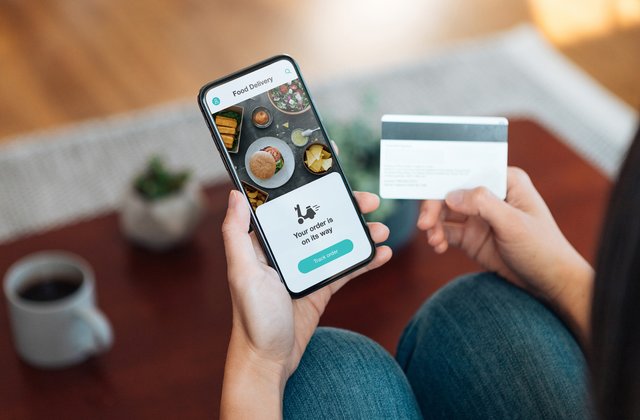
If you ever worry about typing in your credit card number when you’re shopping online, there’s a security option you might not know about: virtual credit cards.
The introduction of chip credit cards has made our financial information a little more secure. But here’s the flip side: Since chip cards decreased thieves’ ability to clone credit cards, their attention has been more focused on online hacking.
Here’s only a partial list of retailers’ websites that have been hacked since January 2018: Zynga, Canva, Orbitz, Best Buy, Delta Air Lines, Panera Bread and Under Armour, which affected 150 million users of its MyFitnessPal app.
There’s a world of virtual credit cards out there that can add another layer of security to your online endeavors. It’s always been important to be on the lookout for identity theft and scams, but it’s especially true right now. The FBI has warned Americans that extra vigilance is needed during the COVID-19 pandemic because scammers love a crisis. Thieves are hoping to find you vulnerable and anxious so you’re more likely to take the bait.
Virtual credit card numbers aren’t going to protect you against all types of scams, but if a company you’ve done business with has a data breach, the hackers won’t get their hands on your real credit card account numbers.
So, read on, and we’ll take a closer look at virtual numbers. We’re going to cover these topics so you’ll know how this service works:
How Virtual Credit Cards Work
As the name suggests, this isn’t a physical card that you hold in your hand. It’s actually a randomly generated credit card number that changes every time your real credit card account is used for a purchase.
A virtual credit card works kind of like chip credit cards. With chip credit cards, the merchant gets a single-use number, or token, which changes every time your chip card is used.
If a fraudster got the account number from a chip card and tried to clone it, it wouldn’t work because the unique code is only good for that single purchase. With virtual credit cards, temporary account numbers are used, so similarly, hackers wouldn’t be able to use those virtual account numbers for purchases.
Bottom line? If the merchant’s website gets hacked, your virtual credit card account number is useless to fraudsters. So this gives you a little more security when it comes to using your credit card online.
Credit Card Issuers That Offer Virtual Credit Cards
Not every credit card issuer offers virtual credit cards. But if the service is available for your credit cards, take advantage of it. An extra layer of security is always a good thing.
Capital One calls its feature an “intelligent assistant.” You can use virtual credit cards via Eno. Cardholders must install the Eno browser extension. Eno will pop up when you are ready to check out on a website. You get a virtual number via Eno, and the website involved never gets your actual number. But again, it’s all connected to your credit card account.
Citi offers virtual credit card numbers but only on a select number of credit cards. You can sign into your credit card account to find out if your card is included in this program.
Other Online Security Options
If your credit card issuer doesn’t offer a virtual credit card option, then you can consider other security options offered by payment processors Visa and Mastercard. This is a bit different, but it does give you a little more security against fraud.
If you shop online using a Visa card, you might see a Visa Secure badge when you check out. Visa states there’s a background program that’s designed to check your identity. You could be asked questions to confirm your identity if anything looks amiss.
If you have a Mastercard, you can consider using Masterpass, which is a digital wallet service. It allows you to keep your credit and debit card information in one secure place.
I don’t recommend using debit cards online, but if you must, there’s an option for extra security. Privacy.com creates virtual numbers for your debit card, which gives it extra protection online. The service is free, but there are upgraded versions for a fee.
A fairly new presence in the virtual account number arena is PayPal Key, which you can use via your PayPal account. But note that this service is offered in conjunction with Mastercard, so your purchases will appear as Mastercard transactions.
The Downsides of Virtual Account Numbers
Depending on the service you use, it can be difficult to return a purchase to the vendor. Most merchants want to reimburse you via the same card number that you used for the purchase.
Another possible downside is letting down your guard. Be sure you regularly check financial accounts online. Remember, these are unusual and anxious times, so don’t get lulled into a false sense of security because you’re using virtual credit card numbers.
Not that many of us are traveling right now due to the pandemic, but if you do decide to get away for a few days, check your accounts while on vacation. A few years ago, I discovered someone had used my American Express card and spent $1,100 on hotels and restaurants. I called my issuer, and my account was quickly frozen and I got a new account number. My issuer offered zero liability, so I was lucky that this got resolved so fast.
There is no such thing as foolproof security, whether it’s virtual numbers or chip technology. You need to remain vigilant about checking your accounts online to make sure there are no fraudulent purchases.
And just one more thing to consider: It’s difficult to use a virtual credit card if you put an item on hold and pay for it in the store. Remember, virtual numbers are designed to protect your financial data online and not for in-store purchases.
Virtual Credit Cards vs. Digital Wallets
All of this technology can get confusing, so let’s make sure you understand that virtual numbers are not the same as digital wallets.
A digital wallet is an app on your mobile device (for example, a phone or tablet) that holds your credit card and debit card information securely. You can use it as a contactless payment method if the merchant has the right equipment to process it.
The security for digital wallets is similar to the security you have with chip credit cards. When you make a purchase, it issues a one-time code or token for the transaction. In this way, a digital wallet also hides your account numbers.
But digital wallets, including Google Pay and Apple Pay, are all a little different. So make sure you understand how a digital wallet works before using it for a purchase.











